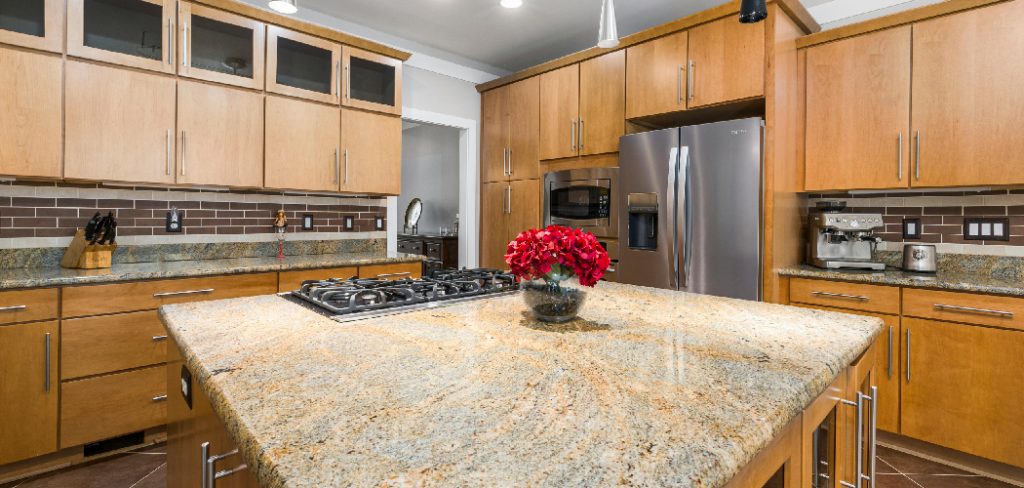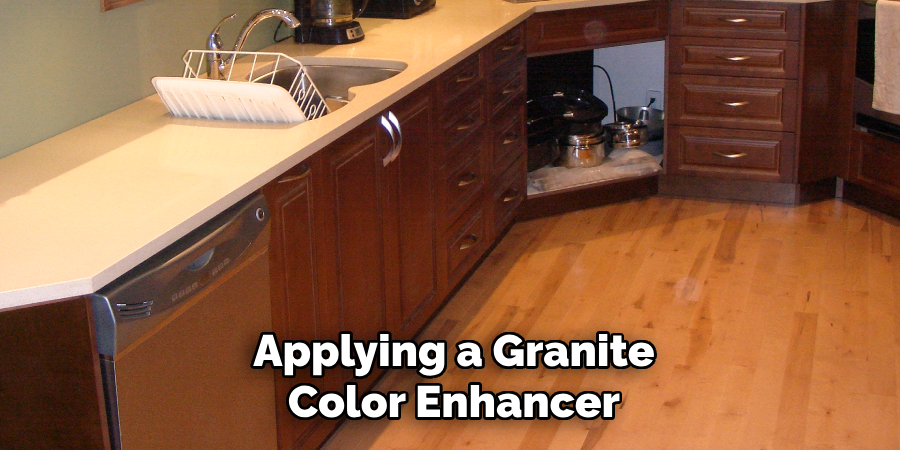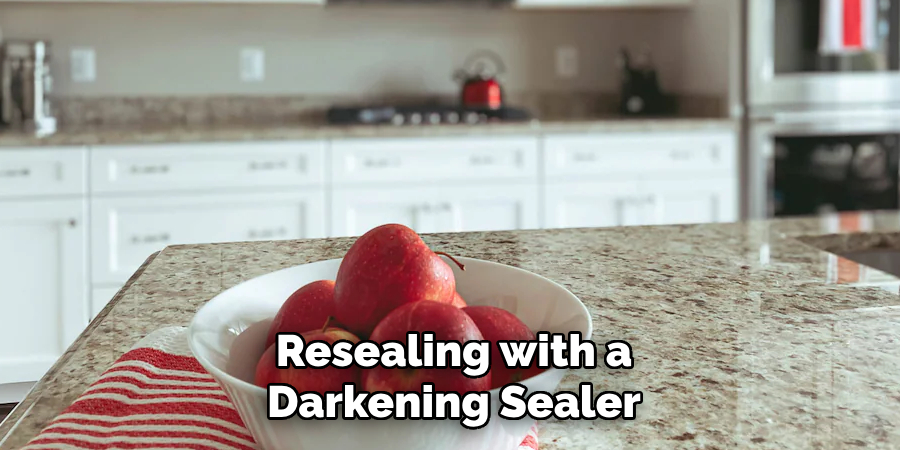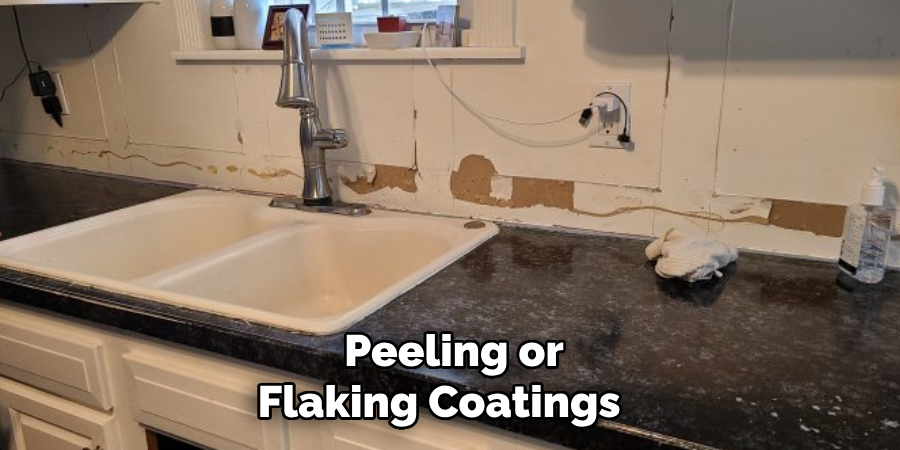Granite countertops are a popular choice for their durability and natural beauty, but over time, you might wish to update their look to complement new design trends or personal preferences. Changing the color of granite countertops can be a cost-effective way to refresh your space without the need for a full replacement. This guide will walk you through the steps and techniques for how to change color of granite countertops.

The Timeless Appeal of Granite Countertops
Granite countertops have long been celebrated for their timeless appeal and versatile aesthetic. Their natural stone patterns, ranging from subtle speckles to bold, dramatic veins, add character and elegance to any kitchen or bathroom design. Beyond their beauty, granite is known for its remarkable strength, able to withstand heat, scratches, and daily wear and tear with ease. This resilience, paired with a luxurious appearance, ensures that granite remains a sought-after choice in both modern and traditional homes. By updating their color, you can keep enjoying their inherent qualities while aligning your space with your evolving style.
Understanding Your Options
When it comes to changing the color of your granite countertops, there are several options to consider, depending on your desired outcome and budget. One popular method is using a granite-specific dye or stain, which allows you to subtly enhance or completely alter the color without masking the natural patterns of the stone.
Another option is applying a tinted sealer, which not only changes the color but also provides added protection against moisture and stains. For those seeking a more dramatic transformation, epoxy or resin coatings can be applied, offering a smooth, uniform finish in virtually any shade. Each option has its advantages and limitations, so it’s important to research which method will produce the best results for your specific countertop and design goals.
10 Methods How to Change Color of Granite Countertops
1. Applying a Granite Color Enhancer
One of the simplest ways to deepen and enrich the color of granite countertops is by using a granite color enhancer. These specially formulated sealers enhance the natural hues of the stone, making them appear richer and more vibrant. To apply, clean the surface thoroughly, then use a soft cloth to rub the enhancer evenly across the countertop. Allow it to dry completely before buffing for a polished look.

2. Using Stone Stain for a Subtle Hue Change
Stone stains can be used to slightly alter the shade of granite while preserving its natural patterns. Choose a stain designed for natural stone and test it on a small, inconspicuous area before applying it to the entire surface. Use a sponge or brush to spread the stain evenly, then wipe off any excess. Multiple layers may be needed to achieve the desired shade.
3. Applying a Tinted Stone Sealer
For those looking for a subtle change, a tinted stone sealer can provide a slight color shift while protecting the granite. These sealers are available in a variety of hues and add depth to the existing color. Clean the surface thoroughly before applying the sealer with a clean cloth or sponge. Allow it to dry for the recommended time before polishing.
4. Painting with a Special Granite Paint Kit
If you want a dramatic color transformation, consider using a granite painting kit. These kits include special primers, paints, and sealants designed for stone surfaces. Start by sanding the surface lightly to help the paint adhere. Apply a bonding primer, followed by the granite paint in layers, using a sponge for a natural texture. Finish with a protective sealer to lock in the new color.
5. Dyeing the Granite for a Permanent Change
Granite dyeing is a more permanent solution for color transformation. Choose a dye that is specifically formulated for porous stone surfaces. Clean and dry the countertop, then use a sponge or brush to apply the dye evenly. Allow it to penetrate the stone before wiping away any excess. Multiple applications may be needed for a deeper color.

6. Using Epoxy Resin with Pigment for a Bold Look
Epoxy resin combined with pigment can provide a completely new color and glossy finish. This method is ideal for those who want a bold or customized look. Mix the epoxy with the desired pigment, then pour it over the countertop in an even layer. Use a roller or brush to spread it smoothly. Once cured, the epoxy creates a durable, high-gloss finish that resists stains and scratches.
7. Applying a Concrete Overlay for a New Surface
For a complete transformation, a concrete overlay can be applied over the granite. This method allows you to achieve a completely new look with different colors and textures. Apply a bonding agent to the granite, then spread a thin layer of concrete mix over the surface. Smooth it out with a trowel and let it cure before sealing.
8. Using a Faux Finish for a Granite Look in a Different Color
A faux finish technique can be used to create a granite-like effect in a different color. Start by sanding the surface and applying a primer. Use a sponge to dab different shades of paint onto the surface, blending them to mimic the look of natural stone. Seal with a clear protective coat to preserve the new finish.
9. Resealing with a Darkening Sealer
If you have light-colored granite and want a darker appearance, a darkening sealer can help achieve the effect. These sealers penetrate the stone and enhance its natural pigmentation. Apply the sealer evenly with a cloth, allowing it to absorb before wiping off any excess. Reapply as needed to maintain the darker tone.

10. Hiring a Professional Refinishing Service
For those who want a guaranteed and professional color change, hiring a stone refinishing expert is a great option. Professionals use specialized tools and techniques to apply stains, dyes, or overlays that achieve a high-quality and long-lasting result. While this is a more expensive method, it ensures a flawless finish that maintains the granite’s durability.
Things to Consider When Changing the Color of Granite Countertops
Before embarking on a project to change the color of your granite countertops, there are several factors to keep in mind to ensure a successful transformation. First, consider the existing condition of the granite—cracks, chips, or uneven surfaces may affect the outcome of certain methods and could require repair prior to starting. Additionally, think about the level of permanence you desire.
Some methods, such as dyeing or epoxy coatings, provide long-lasting effects, while others, like tinted sealers, require regular maintenance and reapplication. It’s also crucial to test any product on a small, inconspicuous area to ensure compatibility and prevent damage to the stone. Lastly, consider the time and effort required—while DIY methods can be cost-effective, they often demand significant preparation and precision.
Troubleshooting Common Issues
When changing the color of granite countertops, unexpected challenges can arise. Here are some common issues and how to address them:
Uneven Color Application
Uneven color can occur if the product is not applied properly or the granite surface is not adequately prepared. To fix this, ensure the countertop is thoroughly cleaned and free of dust, grease, or debris before applying any product. Sanding the surface lightly can also help the color adhere more evenly. If unevenness persists, reapply the color or sealant in thin, consistent layers.
Streaking or Discoloration
Streaks or patches of discoloration may appear due to excess product or insufficient blending. Always follow the manufacturer’s instructions and use the recommended tools, such as soft cloths, sponges, or rollers, for application. If streaking occurs, buff out the affected area once the product is dry or reapply in smaller, more controlled amounts.
Peeling or Flaking Coatings
Peeling or flaking often happens when the surface is not properly prepped or when unsuitable products are used. To resolve this, strip the affected area using a product remover designed for natural stone, then clean and prepare the surface again before reapplying. Always choose products specifically formulated for granite surfaces to prevent adhesion issues.

Fading Over Time
Certain methods, such as stains or tinted sealers, may fade with regular use or exposure to sunlight. To prevent fading, use high-quality products with UV-resistant properties and consider re-sealing the surface periodically. For severe fading, reapply the color product as needed to restore the original look.
Poor Adhesion of Paint or Epoxy
If paint or epoxy fails to adhere, it’s likely due to insufficient surface preparation or leftover residue. Lightly sand the surface and clean thoroughly to remove any contaminants before reapplying. Using a primer specifically designed for stone surfaces can also improve adhesion and durability.
Conclusion
Changing the color of granite countertops can be a highly rewarding project, offering an opportunity to breathe new life into your kitchen or bathroom. With various methods available—ranging from simple DIY techniques to professional refinishing services—you can achieve a look that aligns with your design vision and budget. However, it’s important to approach the process carefully, ensuring proper preparation and the use of appropriate products to maintain the durability and integrity of the stone. Now that you know how to change color of granite countertops, try it yourself today and feel good about completing such a big DIY job!
Professional Focus
Angela Ervin, a former interior designer turned blogger, specializes in kitchen design and renovations. Through her website, she blends her passion for cooking with design expertise, sharing practical and creative ideas. Known for balancing functionality and beauty, Angela’s insightful content has made her a trusted voice in home design and lifestyle.
About the Author
Angela Ervin, an experienced interior designer and blogger, combines her passion for kitchen renovations with storytelling. Living in Petersburg with her family, she enjoys cooking and testing her projects firsthand. Known for her humor and relatable style, Angela shares creative, functional design insights through her content, making her a trusted voice in home design.
Education History
University: Virginia Commonwealth University
Degree: Bachelor of Fine Arts (BFA) in Interior Design
- Angela’s education at VCU focused on mastering core interior design principles, including spatial planning, color theory, materials selection, and sustainable design practices.
- She gained hands-on experience through studio projects and collaborative design exercises, which honed her ability to create functional and aesthetically pleasing environments.
- Her coursework also emphasized problem-solving and practical applications of design, preparing her for real-world projects like her self-directed kitchen renovations.
- The program’s strong foundation in both technical skills and creative expression shaped Angela’s ability to seamlessly integrate form and function in her work.
